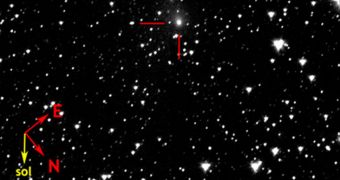A team of experts at NASA announce that the Deep Impact spacecraft has just sent back its first images of the object it's tracking through the depths of space.
The main goal of this mission is to collect readings of the Comet Hartley 2, and the way Deep Impact plans to do that is by effectively chasing the space body as it moves through our solar system.
These first images that the NASA crew announced were taken ahead of their time, as it were, given that the spacecraft is still a good distance away from its target.
The flyby as envisioned by mission planners is now scheduled to take place on November 4. This is when Deep Impact will be closest to Comet Hartley 2.
But the team managing the mission says that it will continue to train the probe's instruments on the comet, in the days leading up to when it reaches the point of closest approach.
When it was first designed, the spacecraft was envisioned as capable of collecting as much as 64,000 pictures throughout its mission.
“Like any tourist who can't wait to get to a destination, we have already begun taking pictures of our comet, Hartley 2,” explains the project manager for the mission, Tim Larson.
“We have to wait for Nov. 4 to get the close-up pictures of the cometary nucleus, but these approach images should keep the science team busy for quite some time as well,” adds the expert, who is based at the NASA Jet Propulsion Laboratory (JPL), in Pasadena, California.
Experts believe that in-depth analysis of Comet Hartley 2 will provide them with a better understanding of how this class of cosmic bodies develops, as well as more insight into their most basic traits.
This particular body was discovered around 24 years ago. Astronomers estimate it to have a diameter of no more than 1.5 kilometers, or 0.9 miles, but Deep Impact will assess its dimensions with more accuracy.
What science does know for certain is that Hartley revolves around the Sun once every 6.5 years, and this is precisely what allowed for training the space probe on its target, Space reports.
The spacecraft features three primary scientific instruments, which included two telescopes featuring digital cameras. An additional telescope features an infrared spectrometer.
These instruments will allow for the JPL team to keep an eye on the comet as the months pass by. The only times when the data feeds will be interrupted is when trajectory corrections will be made.

 14 DAY TRIAL //
14 DAY TRIAL //